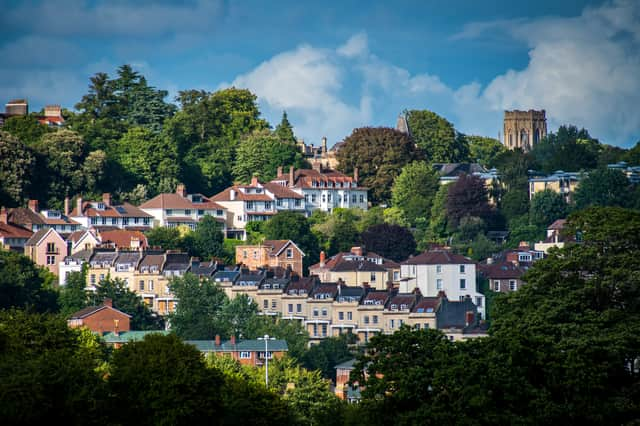Level Up Bristol: Big differences in life expectancy, child poverty and chances of getting cancer


A woman from Henleaze in Bristol can expect to live 13 years longer than a woman from Withywood.
It’s just one of the shocking statistics that show how your chances in life are too often dictated by your postcode and background.
Advertisement
Hide AdAdvertisement
Hide AdAs BristolWorld begins Level Up Bristol, a major campaign calling for action to tackle inequality in the city and its surroundings, here are four charts and maps which reveal the huge disparity between the haves and the have-nots.
Life expectancy
Of all Bristol’s neighbourhoods, life expectancies for men are lowest in the Temple Meads area, where men live for an average of 74 years.
A man from Redland and St Andrew’s, on the other hand, can expect to live to 86.
This 12-year range of life expectancies is higher than in the neighbouring authorities of North Somerset, Bath and North East Somerset and South Gloucestershire.
Loading....
Advertisement
Hide AdAdvertisement
Hide AdThe disparity is even greater among women, according to the data from Public Health England.
A woman from Henleaze in Bristol can expect to live to over 90, 13 years longer than a woman from Withywood.
Loading....
Again, Bristol has a larger range of life expectancies than North Somerset, Bath and North East Somerset and South Gloucestershire.
Child poverty
Nearly half (45 per cent) of children live in poverty in Bristol’s Hartcliffe and Withywood council ward - an estimated 2,105 children.
Advertisement
Hide AdAdvertisement
Hide AdThat compares with just 62 children in the Redland ward, representing 2 per cent of under-16s.
The data from the Ministry of Housing, Communities and Local Government measures the proportion of children aged 0-15 who live in income deprived households.
Explore the situation in your local area using this map.
Loading....
Chances of getting cancer
People in many parts of Bristol have above-average chances of getting cancer.
This is measured using a scale where 100 is the England average.
Advertisement
Hide AdAdvertisement
Hide AdPeople in the Filwood ward have the highest chance of getting cancer, at 31 per cent higher than average.
On the other end of the spectrum, cancer rates in the ward of Hotwells and Harbourside are 7 per cent lower than the England average.
Explore the situation in your local area using this map.
Loading....
Overall, for England, cancer rates are higher in more deprived populations.
According to the charity Macmillan, if overall cancer rates for the most deprived section of society were the same as the richest section, there would be 15,000 fewer cancers diagnosed each year.
However, says the charity, these differences have not improved over time.
Comment Guidelines
National World encourages reader discussion on our stories. User feedback, insights and back-and-forth exchanges add a rich layer of context to reporting. Please review our Community Guidelines before commenting.
